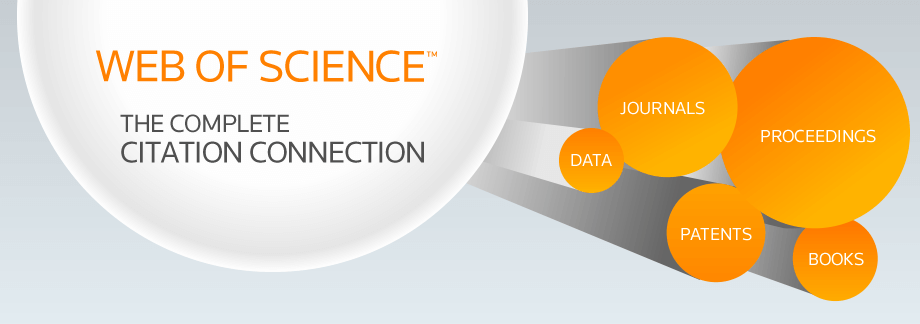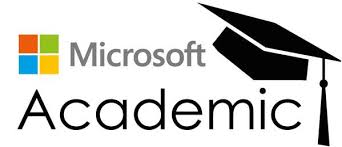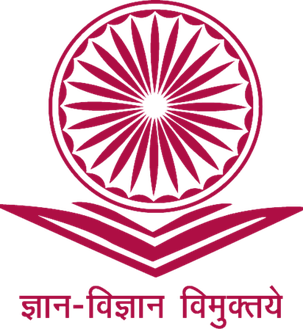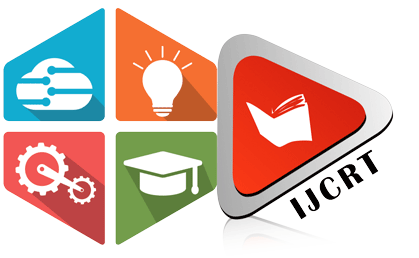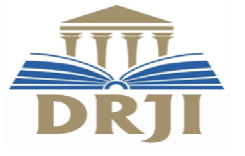INTERNATIONAL JOURNAL OF CREATIVE RESEARCH THOUGHTS - IJCRT (IJCRT.ORG)
International Peer Reviewed & Refereed Journals, Open Access Journal
IJCRT Peer-Reviewed (Refereed) Journal as Per New UGC Rules.
ISSN Approved Journal No: 2320-2882 | Impact factor: 7.97 | ESTD Year: 2013
Call For Paper - Volume 13 | Issue 11 | Month- November 2025
Scholarly open access journals, Peer-reviewed, and Refereed Journals, Impact factor 7.97 (Calculate by google scholar and Semantic Scholar | AI-Powered Research Tool) , Multidisciplinary, Monthly, Indexing in all major database & Metadata, Citation Generator, Digital Object Identifier(CrossRef DOI)
Contact Us Click Here
WhatsApp Contact Click Here
Volume 13 | Issue 5
| IJCRT Journal front page | IJCRT Journal Back Page |
Paper Title: Artificial Intelligence in Education: Navigating Ethical Challenges While Driving Innovation
Publisher Journal Name: IJCRT
Your Paper Publication Details:
Published Paper ID: - IJCRTBC02064
Register Paper ID - 284693
Title: ARTIFICIAL INTELLIGENCE IN EDUCATION: NAVIGATING ETHICAL CHALLENGES WHILE DRIVING INNOVATION
Author Name(s): Dr. R. K. Singh, Dr. Savita Saxena
Publisher Journal name: IJCRT
Volume: 13
Issue: 5
Pages: 467-476
Year: May 2025
Downloads: 136
Abstract
Artificial Intelligence (AI) is reshaping education through personalized learning, automation, and improved accessibility (Luckin et al., 2018). However, ethical concerns such as data privacy, algorithmic bias, accountability, and the digital divide require attention (Selwyn, 2019).This paper examines these ethical challenges while highlighting AI's potential in fostering equitable education. A balance between innovation and ethical responsibility is necessary for sustainable AI integration in educational settings.
Licence: creative commons attribution 4.0
License
Keywords
Artificial Intelligence, ethical concerns, personalized learning, sustainable AI integration
License
Paper Title: Walkable Cities and Sustainable Living: The Impact of Pedestrian-Friendly Planning
Publisher Journal Name: IJCRT
Your Paper Publication Details:
Published Paper ID: - IJCRTBC02063
Register Paper ID - 284694
Title: WALKABLE CITIES AND SUSTAINABLE LIVING: THE IMPACT OF PEDESTRIAN-FRIENDLY PLANNING
Author Name(s): Dr. Saurabh Kumar
Publisher Journal name: IJCRT
Volume: 13
Issue: 5
Pages: 459-466
Year: May 2025
Downloads: 142
Abstract
Urbanization and rapid population growth have led to increased traffic congestion, pollution, and a decline in public health. As a result, cities worldwide are shifting towards sustainable development models, emphasizing walkability as a key aspect of urban planning. The concept of walkable cities has gained significant attention as urban areas seek sustainable solutions to environmental, social, and economic challenges. Pedestrian-friendly planning aims to reduce dependence on automobiles, enhance public health, promote economic vitality, and create more livable urban spaces. This research article explores the principles of walkable city planning, its impact on sustainability, and case studies highlighting successful implementations. The study also discusses policy recommendations and future directions to promote pedestrian-centric urban development.
Licence: creative commons attribution 4.0
License
Keywords
Walkability evaluations, health, sustainability, livability.
License
Paper Title: Transforming Higher Education to Meet the Needs of a Knowledge- Driven Economy: The Indian Context
Publisher Journal Name: IJCRT
Your Paper Publication Details:
Published Paper ID: - IJCRTBC02062
Register Paper ID - 284695
Title: TRANSFORMING HIGHER EDUCATION TO MEET THE NEEDS OF A KNOWLEDGE- DRIVEN ECONOMY: THE INDIAN CONTEXT
Author Name(s): Dr. Seema Singh
Publisher Journal name: IJCRT
Volume: 13
Issue: 5
Pages: 452-458
Year: May 2025
Downloads: 164
Abstract
As the fastest-growing economies in the world, the requirements of the Indian higher education system have to be reformed to meet the demands of a knowledge economy. This paper delineates the possible challenges and opportunities in higher education in India with regard to skill enhancement, digitalization, convergence between industry and academia and policy enablement. The paper indicates potential inputs such as the National Education Policy (NEP) 2020, digital learning platforms and innovation driven by research for a clear indication of higher education's value in economic growth and global competitiveness. Discussions about several opportunities also include global best practices for replication by India in fast-tracking its transformation into a knowledge economy. The potential of becoming a global knowledge hub largely exists for India owing to its demographic dividend and growing digital infrastructure. Traditionally, those aspects to be looked upon include outdated curricula, limited exposure to industries and not-so-great research ecosystems (Agarwal, 2019). Higher education systems must be flexible enough to offer skill development, innovations and research. Hence, a responsive higher education system is essential in driving the economy with knowledge.
Licence: creative commons attribution 4.0
License
Keywords
Transforming Higher Education to Meet the Needs of a Knowledge- Driven Economy: The Indian Context
License
Paper Title: The role of Emerging technology in Education AI/VR/AR and digital learning platforms
Publisher Journal Name: IJCRT
Your Paper Publication Details:
Published Paper ID: - IJCRTBC02061
Register Paper ID - 284696
Title: THE ROLE OF EMERGING TECHNOLOGY IN EDUCATION AI/VR/AR AND DIGITAL LEARNING PLATFORMS
Author Name(s): Dr. Chetna, Ms Shivani Kotwal
Publisher Journal name: IJCRT
Volume: 13
Issue: 5
Pages: 445-451
Year: May 2025
Downloads: 158
Abstract
The aim of this research paper is to explore the role of virtual reality (VR), augmented reality (AR) and artificial intelligence (AI) in the transformation of the education system in India. The research objectives to study the role of emerging technologies such as Virtual Reality (VR), Augmented Reality (AR) and AI platforms in transforming the education system in India are as reasons and impact on students. Case study related to the role of emerging technologies such as virtual reality, augmented reality and AI platforms in transforming the education system in India The researcher taught 10 students for 10 days in a higher secondary school in Jaipur. In this teaching, mathematics and science subjects were taught through AI, VR and AR. For this, the help of a private NGO was taken. After 10 days of study, 10 students were interviewed. On the basis of this, conclusions were drawn based on discussion and analysis. The study shows that these technologies are having a positive impact on the learning ability, study habits, academic achievement and academic stress of students. VR and AR are proving to be very useful in understanding difficult subjects, while AI is making it easier for students to access information. Along with this, the challenges of these technologies have also been analyzed in this research paper.
Licence: creative commons attribution 4.0
License
Keywords
Virtual Reality, AI, AR, Education System, Learning Outcomes
License
Paper Title: Advancing Crop Resilience: Altering Physiological Traits to Address Climate Change Challenges
Publisher Journal Name: IJCRT
Your Paper Publication Details:
Published Paper ID: - IJCRTBC02060
Register Paper ID - 284698
Title: ADVANCING CROP RESILIENCE: ALTERING PHYSIOLOGICAL TRAITS TO ADDRESS CLIMATE CHANGE CHALLENGES
Author Name(s): Shamiya Jahan, Nazia qamar, Sonia Tamta
Publisher Journal name: IJCRT
Volume: 13
Issue: 5
Pages: 438-444
Year: May 2025
Downloads: 161
Abstract
Climate change is a major driver of food insecurity, demanding urgent action and effective measures to prevent millions from falling into hunger and poverty. Subsistence farming communities and vulnerable populations are particularly at risk from climate- related hazards. Changes in future weather patterns including fluctuations in precipitation, increased frequency of floods, droughts, heat waves, and windstorms are expected as the climate continues to shift. These unpredictable and extreme weather events, coupled with shifting growing seasons, are causing inconsistent crop yields, threatening both food security and livelihoods around the world. In this context, promoting climate-resilient agriculture is essential for ensuring sustainable food systems and providing stable income for rural communities. This approach involves adopting farming practices and technologies that can endure and adapt to changing environmental conditions. A key strategy under review is the development of 'smart crops' through the enhancement of plant physiological traits, enabling them to thrive in the face of climate variability.
Licence: creative commons attribution 4.0
License
Keywords
Food insecurity, climate-resilient agriculture, Crop yield, smart crops physiological traits.
License
Paper Title: The Role of Emerging Technologies in Geography Education: AI, VR/AR, and Digital Learning Platforms
Publisher Journal Name: IJCRT
Your Paper Publication Details:
Published Paper ID: - IJCRTBC02059
Register Paper ID - 284699
Title: THE ROLE OF EMERGING TECHNOLOGIES IN GEOGRAPHY EDUCATION: AI, VR/AR, AND DIGITAL LEARNING PLATFORMS
Author Name(s): Dr. Nazia Khan
Publisher Journal name: IJCRT
Volume: 13
Issue: 5
Pages: 431-437
Year: May 2025
Downloads: 145
Abstract
The integration of emerging technologies--Artificial Intelligence (AI), Virtual and Augmented Reality (VR/AR), and digital learning platforms--is transforming geography education by enhancing engagement, interactivity, and personalized learning. Emerging technologies are transforming the landscape of education, offering innovative ways to engage students and enhance learning experiences in geography. AI facilitates adaptive learning through intelligent tutoring systems, automated assessments, and data-driven insights into student performance. VR/AR technologies immerse students in interactive, 3D geographical environments, facilitating a deeper understanding of spatial relationships, terrain, and cultural contexts. VR/AR provides immersive, experiential learning by simulating real-world geographical environments, enabling students to explore complex spatial concepts interactively. Digital learning platforms offer collaborative tools, geospatial data visualization, and remote access to resources, makinggeography education more accessible and dynamic. These technologies allow students to experience places and phenomena that would otherwise be inaccessible, making learning more engaging and impactful. Digital learning platforms, on the other hand, facilitate seamless access to a variety of resources, fostering collaboration, self-paced learning, and global connectivity. Together, these technologies promote deeper comprehension of geographical phenomena, foster critical thinking, and prepare students for a technology-driven world. However, challenges such as accessibility, teacher training, and ethical considerations must be addressed to maximize their potential. This paper examines the opportunities and challenges of these technologies in geography education, highlighting their role in shaping future learning paradigms. It explores how the integration of AI, VR/AR, and digital platforms in geography education enhances cognitive skills, promotes experiential learning, and prepares students for the challenges of the 21st century.
Licence: creative commons attribution 4.0
License
Keywords
Artificial Intelligence (AI), Virtual Reality (VR), Augmented Reality (AR), digital learning platforms, geography education, immersive learning.
License
Paper Title: Fungal Biodiversity and Eco-Friendly Disease Management in Agricultural Forage Feeds
Publisher Journal Name: IJCRT
Your Paper Publication Details:
Published Paper ID: - IJCRTBC02058
Register Paper ID - 284700
Title: FUNGAL BIODIVERSITY AND ECO-FRIENDLY DISEASE MANAGEMENT IN AGRICULTURAL FORAGE FEEDS
Author Name(s): Vikas Verma Patel
Publisher Journal name: IJCRT
Volume: 13
Issue: 5
Pages: 418-430
Year: May 2025
Downloads: 128
Abstract
Fungal biodiversity plays a crucial role in the health and productivity of forage feed crops, influencing both disease outbreaks and plant resilience. While some fungal species cause significant yield losses and produce harmful mycotoxins, others contribute to plant growth, nutrient cycling, and disease suppression. Understanding the diversity of fungal communities associated with forage crops is essential for developing sustainable disease management strategies. Eco-friendly approaches to disease management, such as biocontrol agents, organic amendments, crop rotation, and the use of resistant cultivars, offer effective alternatives to chemical fungicides. Beneficial fungi, including mycorrhizal and endophytic species, enhance plant resistance to pathogens and improve soil health. Moreover, advancements in microbial inoculants and natural fungicides derived from plant extracts and antagonistic microbes show promising potential for controlling fungal diseases in forage systems. This research explores the complex interactions between fungal biodiversity and disease dynamics in forage crops, emphasizing sustainable management strategies. By integrating ecological principles and innovative biocontrol techniques, eco-friendly approaches can enhance forage productivity while minimizing environmental impacts. The findings contribute to the development of resilient agricultural systems that ensure livestock feed security and ecosystem sustainability.
Licence: creative commons attribution 4.0
License
Keywords
Fungal biodiversity, forage crops, eco-friendly management, biocontrol agents, sustainable agriculture
License
Paper Title: From A. I. (Ancient India) to A. I. (Artificial Intelligence)
Publisher Journal Name: IJCRT
Your Paper Publication Details:
Published Paper ID: - IJCRTBC02057
Register Paper ID - 284702
Title: FROM A. I. (ANCIENT INDIA) TO A. I. (ARTIFICIAL INTELLIGENCE)
Author Name(s): Dr.Tilak Raj Gaur
Publisher Journal name: IJCRT
Volume: 13
Issue: 5
Pages: 411-417
Year: May 2025
Downloads: 158
Abstract
India's rich intellectual heritage has profoundly influenced global developments in science, mathematics, and technology. This article explores the intersections between ancient Indian knowledge systems and artificial intelligence (AI), and shows how fundamental concepts of mathematics, linguistics, and logical reasoning influence modern computational models. By integrating Vedic mathematics, Panini grammar, and rule logic with AI-based innovations, India can strengthen its digital transformation. The study also examines the role of AI in education, industry, and governance in line with the vision of a developmental India 2.0. Moreover, AI ethical principles rooted in Dharma and sustainability ensure inclusive and responsible AI development. By leveraging its historical knowledge, India can establish itself as a global leader in AI, while pursuing technological advancements with cultural and ethical awareness.
Licence: creative commons attribution 4.0
License
Keywords
Ancient India, Artificial Intelligence, Viksit Bharat, Technology and Education
License
Paper Title: Combating Malnutrition: A Vision for Viksit Bharat
Publisher Journal Name: IJCRT
Your Paper Publication Details:
Published Paper ID: - IJCRTBC02056
Register Paper ID - 284704
Title: COMBATING MALNUTRITION: A VISION FOR VIKSIT BHARAT
Author Name(s): Huma Parveen, Trapti Pandey
Publisher Journal name: IJCRT
Volume: 13
Issue: 5
Pages: 405-410
Year: May 2025
Downloads: 150
Abstract
One of the most pressing public health challenges in India is still seen in poor diets that have resulted in malnutrition. Though India has experienced economic progress, it has a dual burden of malnutrition which consists of under nutrition, overnutritionandmicronutrient deficiencies. The key objective of this issue is to realize the ideal situation of Viksit Bharat (Developed India), a country where everyone has access to wholesome food, first-rate medical care, and an education. This paper covers the key approaches for solving malnutrition, which are based on recent research and policy analysis. Reducing child undernutrition can be strongly reduced by strengthening government interventions like POSHAN Abhiyan and the Mid Day Meal Scheme (PM - POSHAN). National food security can be improved through PDS reforms with inclusion of nutrient dense foods like millets and fortified cereals. Biofortified crops and AI driven nutrition tracking are highlighted as key contributors in addressing micronutrient deficiencies. In addition, promising results have been produced by the community based initiatives including nutrition gardens and maternal nutrition education to increase household dietary diversity. These include running gender-sensitive nutrition programs that empower women, promoting climate resilient crops such as millets and using real time malnutrition mapping that uses AI. For Viksit Bharat that means a multi sectoral approach with policy reforms and technological development to offset the local elements of adaption of better options. What this study illustrates is that there is a need for holistic and evidence based interventions for better health outcomes and future economic prosperity.
Licence: creative commons attribution 4.0
License
Keywords
POSHAN Abhiyan, PDS reforms, AI in nutrition, Public health, Food security, Gender-sensitive policies.
License
Paper Title: Characterization and evaluation of nanoparticle in human welfare
Publisher Journal Name: IJCRT
Your Paper Publication Details:
Published Paper ID: - IJCRTBC02055
Register Paper ID - 284705
Title: CHARACTERIZATION AND EVALUATION OF NANOPARTICLE IN HUMAN WELFARE
Author Name(s): Humaira Rani, Nisha Dinkar, Insha, Deeksha Srivastava
Publisher Journal name: IJCRT
Volume: 13
Issue: 5
Pages: 400-404
Year: May 2025
Downloads: 136
Abstract
This paper offers a comprehensive overview of the synthesis, characteristics, and applications of nanoparticles (NPs) in various forms. Nanoparticles are diminutive materials with size dimensions ranging from 1 to 100 nanometres. They can be categorised into many classes according to their qualities, forms, or sizes. The various categories comprise fullerenes, metallic nanoparticles, ceramic nanoparticles, and polymeric nanoparticles. Nanoscale particles exhibit distinctive physical and chemical characteristics owing to their elevated surface area and diminutive size. The importance of nanoparticles (NPs) in technological progress stems from their versatile properties and superior performance compared to their parent materials. They are often produced by reducing metal ions to neutral nanoparticles with toxic reducing chemicals. In recent years, there has been significant utilisation of NPs in many industrial and environmental applications that are deemed critical. The study shows that nanoparticles have a big impact on many different industries and fields. This shows how important it is to keep researching and developing them to fully understand their potential and reduce any risks or worries that come with it.
Licence: creative commons attribution 4.0
License
Keywords
Nanoparticles ,Fullerness ,Optical ,Plasmonic ,Toxicity green synthesis, nanoparticles, nanotechnology, biological synthesis
License
Paper Title: Study on promoting creativity, critical thinking and entrepreneurship through curriculum reforms
Publisher Journal Name: IJCRT
Your Paper Publication Details:
Published Paper ID: - IJCRTBC02054
Register Paper ID - 284706
Title: STUDY ON PROMOTING CREATIVITY, CRITICAL THINKING AND ENTREPRENEURSHIP THROUGH CURRICULUM REFORMS
Author Name(s): Jyoti, Professor Lajwanti
Publisher Journal name: IJCRT
Volume: 13
Issue: 5
Pages: 395-399
Year: May 2025
Downloads: 153
Abstract
Promotes creativity, critical thinking and entrepreneurship through curriculum reforms that enable them to generate or explore alternatives, ideas and possibilities,Because with its help, children can develop physically and mentally, such as thinking quickly and solving problems in a new way,It transforms imaginative and original ideas into reality, which helps to enhance critical thinking and entrepreneurship in students. It also develops a knowledge seeking attitude in students.Critical thinking is not only closely linked to entrepreneurship, but it is also a meta skill for mastering other entrepreneurial skills/abilities.To foster creativity by reforming the curriculum, encouraging innovation and imagination in education, allowing students independent exploration and self-directed learning, providing resources and guidance to teachersand should include teaching methods that foster creativity,successful entrepreneurs not only have to engage in entrepreneurial processes-They have the knowledge and skills to turn an idea into a business. They also need an entrepreneurial mindset that seeks out problems and solutions. Critical thinking is important for both of these elements.Throughout the entrepreneurial journey, from customer discovery to idea generation to business model innovation and beyond, critical thinking skills are essential to performing these complex tasks in a meaningful, useful way.
Licence: creative commons attribution 4.0
License
Keywords
Creativity,Critical Thinking, Entrepreneurship, Realism
License
Paper Title: INFLUENCE OF RISING TEMPERATURE ON GLACIER ICE
Publisher Journal Name: IJCRT
Your Paper Publication Details:
Published Paper ID: - IJCRTBC02053
Register Paper ID - 284707
Title: INFLUENCE OF RISING TEMPERATURE ON GLACIER ICE
Author Name(s): Ms. Jyoti, Dr. Chanchal Shrivastva, Dr. Monika Saxena
Publisher Journal name: IJCRT
Volume: 13
Issue: 5
Pages: 379-394
Year: May 2025
Downloads: 159
Abstract
Climate change has a significant impact on health's social and environmental determinants. It's frequently linked to our environment and man-made stressors, both of which have already had an impact on public health in a variety of ways. Climate change has a direct impact on our basic needs for clean air, clean water, sufficient food, and safe shelter. Global warming, rising sea levels, extreme weather, natural disasters, and other new health-related threatsare all becoming more prevalent in our daily lives. These effects appeared to be unrelated at first, but they are in fact intertwined. Global warminghas nowovertaken allof theother threats as the mostserious issuein almostevery country. Icebergs and glaciers may melt as a result of global warming, raising sea levels, and there are theories that more ancient viruses and animal corpses are being discovered. On a long-term scale, the problems and damage that come with environmental issues are harmful to huma Climate change has a significant impact on health's social and environmental determinants. It's frequently linked to our environment and man-made stressors, both of which have already had an impact on public health in a variety of ways.Climate change has a direct impact on our basic needs for clean air, clean water, sufficient food, and safe shelter. Global warming, rising sea levels, extreme weather, natural disasters, and other new health-related threatsare all becoming more prevalent in our daily lives. These effects appeared to be unrelated at first, but they are in fact intertwined. Global warminghas nowovertaken allof theother threats as the mostserious issuein almostevery country. Icebergs and glaciers may melt as a result of global warming, raising sea levels, and there are theories that more ancient viruses and animal corpses are being discovered.Climate change is causing glaciers to melt, which is a major contributor to sea level rise. Glaciers are also a vital water source for communities and ecosystems. Glaciers are shrinking or disappearing in many parts of the world. They are flowing into the ocean. Melting glaciers and ice sheets are the biggest cause of sea level rise in recent decades and threaten natural and human water supplies in many parts of the world. Support legislation that creates favorable market conditions for the carbon-free energy industry. Glaciers and the environment are severely affected by global warming. The forecast for the year 2022 -2025 is that the winter season will see only 10-15% of winters, which makes it clear that rapid melting of old ice sheets and glaciers is confirming that climate change will lead to many issues. This study used a scoping review methodology to explore the integrated impacts of climate change on glaciers from the academic literature. The findings showed that some glacial landscapes are experiencing a decline in beauty or attractiveness, while some landscapes are likely to experience continued decline or even disappearance.
Licence: creative commons attribution 4.0
License
Keywords
Shrinkage, Calving, Decade, Law, Integrated Effect
License
Paper Title: Skill Development and Vocational Training for Employability in a Digital-First Industry: Innovations for a Future-Ready India
Publisher Journal Name: IJCRT
Your Paper Publication Details:
Published Paper ID: - IJCRTBC02052
Register Paper ID - 284708
Title: SKILL DEVELOPMENT AND VOCATIONAL TRAINING FOR EMPLOYABILITY IN A DIGITAL-FIRST INDUSTRY: INNOVATIONS FOR A FUTURE-READY INDIA
Author Name(s): Dr. Kalpna Katiyar
Publisher Journal name: IJCRT
Volume: 13
Issue: 5
Pages: 371-378
Year: May 2025
Downloads: 138
Abstract
India stands at a pivotal juncture in its economic and social development, powered by its youthful demographic and the accelerating adoption of digital technologies. As global industries transition to digital-first operations driven by Artificial Intelligence, automation, and data analytics, India's workforce must rapidly adapt to remain competitive. This paper explores how innovative approaches to skill development and vocational training can enhance employability in India's digital landscape. It provides a comprehensive analysis of governmental initiatives, educational reforms, and public- private collaborations that are driving the evolution of vocational education. Further, it addresses the persistent challenges such as the mismatch between curriculum and industry needs, disparities in access, and the social stigma around vocational careers. Through a synthesis of contemporary literature and policy developments, the paper proposes strategic frameworks to develop an inclusive, scalable, and future-proof skilling ecosystem that aligns with the Fourth Industrial Revolution. The findings emphasize that equipping India's workforce with digital competencies is critical not only for individual livelihood security but also for national economic competitiveness in a digitally integrated world.
Licence: creative commons attribution 4.0
License
Keywords
Digital-first economy, Skill development, Vocational training, Industry 4.0, Future skills, India, Employability, Public-private partnership, Educational reform, E- learning.
License
Paper Title: Rashtriya Siksha niti 2020 dwara shaikshikanvachar: naitiksiksha ke vishesh sandarbh mein
Publisher Journal Name: IJCRT
Your Paper Publication Details:
Published Paper ID: - IJCRTBC02051
Register Paper ID - 284709
Title: RASHTRIYA SIKSHA NITI 2020 DWARA SHAIKSHIKANVACHAR: NAITIKSIKSHA KE VISHESH SANDARBH MEIN
Author Name(s): Kavita rastogi, Dr. Naheed Parveen
Publisher Journal name: IJCRT
Volume: 13
Issue: 5
Pages: 366-370
Year: May 2025
Downloads: 137
Abstract
Rashtriya Siksha niti 2020 dwara shaikshikanvachar: naitiksiksha ke vishesh sandarbh mein
Licence: creative commons attribution 4.0
License
Keywords
Rashtriya Siksha niti 2020 dwara shaikshikanvachar: naitiksiksha ke vishesh sandarbh mein
License
Paper Title: Promoting traditional and nutritious crops: Indian perspective in the 21st century
Publisher Journal Name: IJCRT
Your Paper Publication Details:
Published Paper ID: - IJCRTBC02050
Register Paper ID - 284712
Title: PROMOTING TRADITIONAL AND NUTRITIOUS CROPS: INDIAN PERSPECTIVE IN THE 21ST CENTURY
Author Name(s): Dr. Meenakshi Rajput, Pragya Ritambhara
Publisher Journal name: IJCRT
Volume: 13
Issue: 5
Pages: 360-365
Year: May 2025
Downloads: 135
Abstract
Promoting traditional and nutritious crops: Indian perspective in the 21st century
Licence: creative commons attribution 4.0
License
Keywords
Promoting traditional and nutritious crops: Indian perspective in the 21st century
License
Paper Title: Integrating Modern Biology into the Circular Economy: Strategies for Waste Reduction and Resource Recovery
Publisher Journal Name: IJCRT
Your Paper Publication Details:
Published Paper ID: - IJCRTBC02049
Register Paper ID - 284713
Title: INTEGRATING MODERN BIOLOGY INTO THE CIRCULAR ECONOMY: STRATEGIES FOR WASTE REDUCTION AND RESOURCE RECOVERY
Author Name(s): Mitali Mahajan, Ritik Kumar, Mohd. Shahbaz, Raj Mathur, Kaif Alam
Publisher Journal name: IJCRT
Volume: 13
Issue: 5
Pages: 355-359
Year: May 2025
Downloads: 131
Abstract
The escalating global challenges of waste accumulation and resource depletion necessitate innovative approaches to sustainable development. Integrating modern biological techniques into the circular economy model offers a promising pathway to mitigate waste and enhance resource recovery. This research explores the potential of biotechnological advancements--such as enzymatic degradation, microbial recycling, and bio-based material production--to transform waste streams into valuable resources. By examining case studies and current innovations, the study aims to elucidate how modern biology can be harnessed to close material loops, reduce environmental impact, and promote economic growth. The findings underscore the importance of interdisciplinary collaboration and policy support in realizing the full benefits of a bio-integrated circular economy.
Licence: creative commons attribution 4.0
License
Keywords
Circular Economy, Modern Biology, Waste Reduction, Resource Recovery, Biotechnology, Enzymatic Degradation, Microbial Recycling, Bio-based Materials, Sustainability.
License
Paper Title: Achieving self-sufficiency in India's electric vehicle ecosystem: The road to Aatmanirbharta
Publisher Journal Name: IJCRT
Your Paper Publication Details:
Published Paper ID: - IJCRTBC02048
Register Paper ID - 284714
Title: ACHIEVING SELF-SUFFICIENCY IN INDIA'S ELECTRIC VEHICLE ECOSYSTEM: THE ROAD TO AATMANIRBHARTA
Author Name(s): Mr. Ajeet Verma, Prof. Sanjay Mishra
Publisher Journal name: IJCRT
Volume: 13
Issue: 5
Pages: 345-354
Year: May 2025
Downloads: 139
Abstract
One of the biggest worldwide concerns at the moment is environmental degradation. Governments around the world have recently turned their attention to growing the electric vehicle (EV) ecosystem in developing nations in an effort to lessen environmental damage. The main goal of this article is to analyse the EV ecosystem in India. According to the study, even if EV sales are rising by triple digits, a strong support system has not yet been established. Interestingly, India has a woefully low ratio of EV sales to public charging outlets. India needs to make investments in cutting-edge technology like fast charging infrastructure and lithium cell manufacturing if it wants to become a leader in the EV sector. Research and development (R&D) must also be given top priority if self- reliance Aatmanirbhar is to be achieved in the EV ecosystem.
Licence: creative commons attribution 4.0
License
Keywords
Degradation, ecosystem, lithium cell, public charging outlets
License
Paper Title: "Therapeutic Potential of Emblica officinalis (Amla): A Natural Remedy for Health and Wellness"
Publisher Journal Name: IJCRT
Your Paper Publication Details:
Published Paper ID: - IJCRTBC02047
Register Paper ID - 284715
Title: "THERAPEUTIC POTENTIAL OF EMBLICA OFFICINALIS (AMLA): A NATURAL REMEDY FOR HEALTH AND WELLNESS"
Author Name(s): Ms. Shraddha Sharma, Ms. Anshul Chauhan, Dr. Manoj Joshi
Publisher Journal name: IJCRT
Volume: 13
Issue: 5
Pages: 336-344
Year: May 2025
Downloads: 144
Abstract
The Amla tree (Emblica officinalis), a deciduous species bearing fleshy, lemon-sized fruits, is renowned for being one of the richest natural sources of ascorbic acid. It has been widely utilized in Unani and Ayurvedic medicine for its therapeutic properties since ancient times. Amla is packed with essential nutrients, including iron, calcium, phosphorus, and tannins, and exhibits haematinic, anabolic, antibacterial, anti- inflammatory, hepatoprotective, and nephroprotective activities. Scientific studies have highlighted its radio modulatory, chemoprotective, free radical scavenging, anti- neoplastic, and immunomodulatory effects. Traditionally, ?mla has been employed in treating anaemia, palpitations, and anxiety. Additionally, its sharbat is believed to provide relief in conditions like jaundice, haemorrhoids, flatulence, and dyspepsia. This review aims to explore the botanical, physical, chemical, and medicinal attributes of Amla (Emblica officinalis). It emphasizes the need for rigorous scientific validation of its therapeutic claims to establish its efficacy as a cost-effective remedy with minimal side effects.
Licence: creative commons attribution 4.0
License
Keywords
Amla, Therapeutic Potential, Haemorrhoids
License
Paper Title: Faculty Perspectives on Integrating AI-Based Learning Tools for Developing Critical Thinking in Indian Higher Education
Publisher Journal Name: IJCRT
Your Paper Publication Details:
Published Paper ID: - IJCRTBC02046
Register Paper ID - 284716
Title: FACULTY PERSPECTIVES ON INTEGRATING AI-BASED LEARNING TOOLS FOR DEVELOPING CRITICAL THINKING IN INDIAN HIGHER EDUCATION
Author Name(s): Ms. Anubha Gaumat, Ms. Reshu Tyagi
Publisher Journal name: IJCRT
Volume: 13
Issue: 5
Pages: 324-335
Year: May 2025
Downloads: 140
Abstract
The integration of Artificial Intelligence (AI) in higher education presents new opportunities for fostering critical thinking among students. This study explores faculty perspectives on the adoption and implementation of AI-based learning tools in Indian universities. Using a qualitative research approach, semi-structured interviews were conducted with faculty members across disciplines to understand their experiences, challenges, and best practices related to AI-enhanced pedagogy. The findings highlight both enthusiasm and apprehension regarding AI's role in higher education. While faculty recognize AI's potential to provide real-time feedback, personalize learning, and encourage analytical reasoning, concerns persist regarding faculty readiness, student dependency, ethical considerations, and institutional barriers. The study underscores the need for structured faculty training, policy interventions, and balanced AI-human pedagogical approaches to optimize AI's impact on critical thinking. The research contributes to ongoing discussions on AI's role in education and provides practical insights for policymakers and educators.
Licence: creative commons attribution 4.0
License
Keywords
Artificial Intelligence, Critical Thinking, Faculty Perspectives, Higher Education, Pedagogical Innovation, AI-Based Learning, Indian Universities
License
Paper Title: Fostering Creativity, Critical Thinking, and Entrepreneurship through Curriculum Reforms
Publisher Journal Name: IJCRT
Your Paper Publication Details:
Published Paper ID: - IJCRTBC02045
Register Paper ID - 284717
Title: FOSTERING CREATIVITY, CRITICAL THINKING, AND ENTREPRENEURSHIP THROUGH CURRICULUM REFORMS
Author Name(s): Ms. Pooja Negi, Dr. Devendra Singh Bisht
Publisher Journal name: IJCRT
Volume: 13
Issue: 5
Pages: 312-323
Year: May 2025
Downloads: 137
Abstract
In the 21st century, education focused on equips students with essential skills such as creativity, critical thinking, and entrepreneurship. Traditional curriculum, often rigid and exam-focused, emphasizes rote learning and theoretical knowledge, limiting students' ability to apply their skills in real-life situations. This paper explores the need for curriculum reform to foster critical thinking, creativity, and entrepreneurial skills. It examines the limitations of the current education system and highlights the benefits of integrating experiential learning, problem-solving approaches, and technology into the curriculum. Through a case study research design, data is gathered from interviews, classroom observations, and document analysis to assess the effectiveness of these reforms. Findings suggest that a restructured curriculum, incorporating inquiry-based learning, project-based activities, and entrepreneurial education, enhances students' cognitive abilities, problem-solving skills, and adaptability. The paper concludes that comprehensive curriculum reform is essential for preparing students for the dynamic challenges of the modern world, ensuring they develop the competencies needed for academic, professional, and personal success.
Licence: creative commons attribution 4.0
License
Keywords
Curriculum, Critical Thinking, Creativity, Entrepreneurship, Curriculum Reform
License
About IJCRT
The International Journal of Creative Research Thoughts (IJCRT) aims to explore advances in research pertaining to applied, theoretical and experimental Technological studies. The goal is to promote scientific information interchange between researchers, developers, engineers, students, and practitioners working in and around the world.
Indexing In Google Scholar, ResearcherID Thomson Reuters, Mendeley : reference manager, Academia.edu, arXiv.org, Research Gate, CiteSeerX, DocStoc, ISSUU, Scribd, and many more International Journal of Creative Research Thoughts (IJCRT) ISSN: 2320-2882 | Impact Factor: 7.97 | 7.97 impact factor and ISSN Approved. Provide DOI and Hard copy of Certificate. Low Open Access Processing Charges. 1500 INR for Indian author & 55$ for foreign International author. Call For Paper (Volume 13 | Issue 11 | Month- November 2025)
November 2025
Volume 13 | Issue 11
Last Date :
30-Nov-2025
Submit Manuscript Online Impact Factor: 7.97 Review Results : Within 02-03 Days Paper Publication : Within 02-03 Days

ISSN: 2320-2882 Impact Factor: 7.97 and ISSN APPROVED Journal Starting Year (ESTD) : 2013

ISSN: 2320-2882 Impact Factor: 7.97 and ISSN APPROVED Journal Starting Year (ESTD) : 2013

CONFERENCE PROPOSAL CONFERENCE PROCEEDINGS





